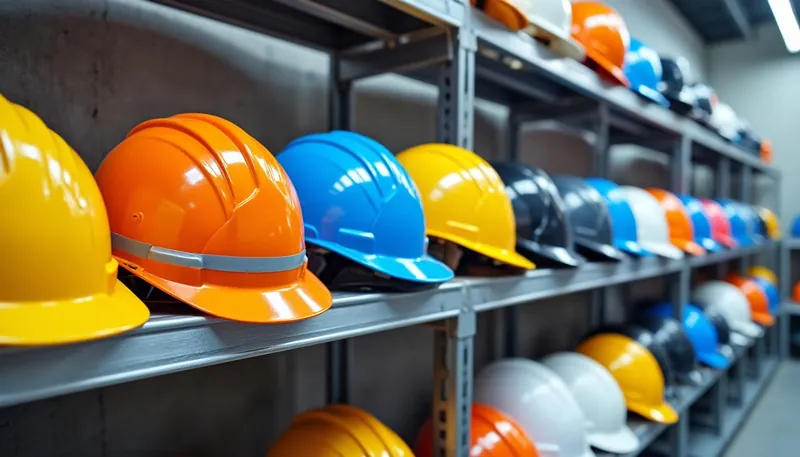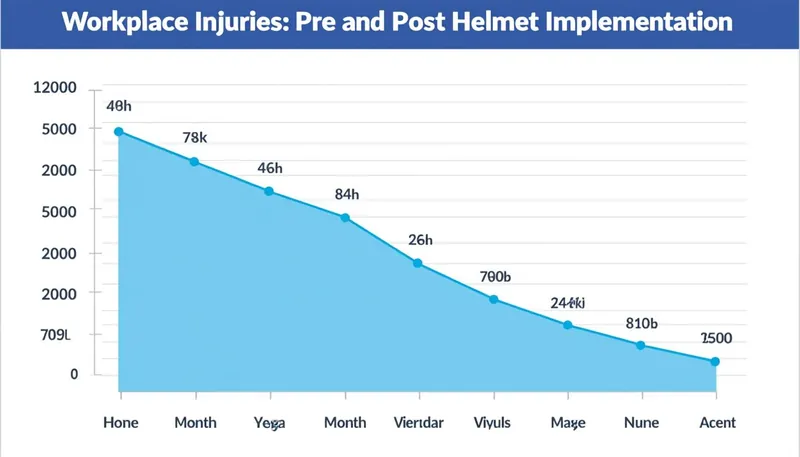In today’s fast-paced and often unpredictable work environments, the significance of having proper personal protective equipment (PPE) cannot be aggregated into a mere checklist. Helmets and protective gear play a crucial role in saving lives, reducing injuries, and enhancing morale among workers of all sectors, from construction sites to manufacturing plants. Imagine a world where employees no longer worry about the potential threats that lurk behind every corner — all with the reassuring presence of top-notch safety gear. The need for compliance and understanding the multifaceted layers of regulations surrounding PPE becomes pivotal in fostering a strong safety culture and reinforcing the notion that SafetyFirst should be everyone’s priority.
As we navigate through 2025, it’s pivotal to highlight the increased focus on worker safety and regulatory standards being implemented across various industries. Helments are more than just headgear; they symbolize commitment to creating safer workplaces. Achieving an environment where helmets are a norm, not an exception, requires ongoing education, practice, and accountability from both employers and employees. Let’s dive into the different facets of helmet use and explore why embracing PPE like helmets is an investment in the future of workplace safety.
- 🎧 Helmets provide crucial protection against head injuries, a leading cause of workplace fatalities.
- 🛠️ Regulatory requirements dictate the need for helmets in industries like construction and manufacturing.
- 💡 Regular training and awareness campaigns can significantly reduce resistance to helmet compliance.
- 🔍 Emerging technologies promise to revolutionize helmet safety with smarter, more effective designs.
- ⭐ A robust safety culture encourages the normal use of helmets and protective gear.
The Regulatory Frameworks Surrounding Helmet Use
Understanding the regulatory landscape is essential for organizations to ensure compliance with safety standards and enhance worker protection. Several regulations dictate helmet requirements, particularly in high-risk industries like construction and manufacturing.
Global Standards and Regulations
Internationally recognized standards for helmets are established by organizations such as the International Organization for Standardization (ISO) and the American National Standards Institute (ANSI). For instance, the ISO 3873 standard details helmet performance, design, and testing methods specifically meant for industrial safety. Another crucial standard, ANSI Z89.1, outlines head protection requirements in occupational settings, ensuring workers are adequately shielded from hazards.
| Standard | Description | Applied Industries |
|---|---|---|
| ISO 3873 | Addresses requirements for industrial safety helmets including tests for durability and performance. | Construction, Manufacturing |
| ANSI Z89.1 | Outlines performance requirements for helmets in workplace environments to prevent head injuries. | Educational, Industrial |
Local Regulations and Compliance
Local regulations often supplement global standards by outlining additional guidelines for helmet usage. For instance, in the United States, the Occupational Safety and Health Administration (OSHA) mandates employers provide head protection for workers exposed to risks of head injuries. It’s critical for organizations to remain vigilant and adhere to these guidelines to avoid penalties and ensure that employee safety is prioritized.
Ensuring Helmet Regulations are Enforced
Enforcement of helmet regulations must be taken seriously to maintain workplace safety. Regular safety audits, compliance checks, and training programs should form the backbone of an organization’s safety approach. Employers are encouraged to educate their workforce on the importance of helmet usage, as well as the potential consequences of neglecting safety protocols. It’s not just about compliance; it’s about building a culture where wearing a helmet is second nature.

Best Practices for Helmet Use and Maintenance
To maximize the effectiveness of helmets, organizations should implement best practices focusing on proper usage and maintenance. These practices not only protect employees but also create a culture of responsibility and awareness among workers.
Selecting the Right Helmet
Choosing the appropriate helmet according to specific hazards is not just prudent — it’s essential. Different environments come with unique risks, such as impact and electrical hazards. In construction, hard hats rated for impact are necessary, while electrical work may require helmets designed to withstand voltage exposure. Employers should ensure they provide helmets meeting or exceeding industry standards appropriate for the tasks at hand.
Training and Education
Regular training sessions play an invaluable role in promoting helmet safety. Through hands-on demonstrations and real-life incident discussions, employees can grasp both the importance of helmet use and the proper fitting techniques. Effective training boosts compliance and helps workers understand the life-saving potential of their protective gear.
- 📚 Regular training sessions on helmet use are crucial.
- 🔧 Discuss real-life incidents where helmet use prevented injuries.
- 🛠️ Hands-on demonstrations on proper fitting techniques increase compliance.
Inspection and Maintenance
Regular inspections of helmets are vital to ensure their effectiveness. Organizations should develop a routine schedule for checking helmets for signs of wear, damage, and expiration. Helmets with cracks or fading must be replaced immediately to maintain safety standards. Encouraging workers to report helmet damage reinforces the need for secure and effective headgear.
| Inspection Area | Criteria | Action Required |
|---|---|---|
| Outer Shell | Check for cracks or dents | Replace if damaged |
| Chin Strap | Ensure it is intact and functional | Replace if worn |
| Padding | Look for wear and tear | Replace if necessary |
Case Studies: Real-World Impacts of Helmet Use
Real-world case studies present invaluable lessons on the impact of helmet use and the critical nature of compliance with safety measures. From near-miss incidents to successful safety implementations, these accounts serve as a rallying point for advocating the importance of wearing helmets in the workplace.
Case Study 1: Construction Site Incident
During a construction project, a worker fell from scaffolding without wearing a helmet. The consequences were dire, resulting in a severe head injury that led to long-term complications. This incident compelled the construction firm to reassess their safety protocols, leading to stricter enforcement of helmet use on site and an overall boost in safety training initiatives.
Case Study 2: Successful Manufacturing Safety Program
In contrast, a manufacturing facility decided to implement a comprehensive safety program that incorporated mandatory helmet usage. Over five years, this facility reported a significant decline in head injuries, attributed to high-quality helmets and consistent training sessions. Such proactive measures can enhance compliance and create a safer working environment.
- 🚧 Lessons learned from incidents can drive better safety practices.
- 📉 Reductions in injuries create a safer environment for everyone.
- 🔄 A proactive approach promotes a culture where safety gear is embraced.

Challenges in Complying with Helmet Policies
Despite the clear advantages of wearing helmets and other safety gear, various challenges persist that hinder full compliance and effective usage. Recognizing these hurdles is the foundation for developing lasting solutions.
Worker Resistance and Attitudes
One of the most prevalent challenges organizations face is worker resistance to wearing helmets. Many employees may find helmets uncomfortable or irrelevant, especially when no visible hazards are present. Therefore, building a strong culture of safety that normalizes helmet use is crucial. This can be achieved through open discussions and continual reinforcement of the positive impacts of helmet adherence.
Financial Considerations
Concerns about the costs associated with high-quality safety helmets can also deter organizations from investing in proper protection gear. However, the long-term financial burden from injuries often outweighs the initial investment in safety equipment. Prioritizing PPE expenditures can yield savings by reducing injury claims and enhancing overall employee wellness.
Proper Fit and Comfort
Ensuring that helmets fit correctly and are comfortable during long work shifts is another significant challenge. Ill-fitting helmets can lead to discomfort and increased likelihood of non-compliance. Providing a variety of sizes and styles, while soliciting feedback to improve helmet comfort, encourages workers to wear helmets consistently.
| Challenge | Impact on Compliance | Proposed Solutions |
|---|---|---|
| Worker Resistance | Lower compliance rates. | Foster a safety culture. |
| Cost of Helmets | Underfunded safety programs. | Invest in long-term safety benefits. |
| Fit Issues | Increased discomfort and non-compliance. | Offer various sizes and styles. |
Future Innovations in Helmet Safety Technology
The landscape of workplace safety continually evolves, and helmet technology is no exception. Emerging trends promise to enhance helmet effectiveness, pushing the boundaries of protection in the workplace.
Smart Helmet Technology
One of the most thrilling advancements in helmet safety involves the development of smart helmets. These cutting-edge helmets are equipped with features like built-in communication systems, augmented reality displays, and environmental sensors that monitor workplace conditions. The integration of technology aims to improve safety while enhancing situational awareness for workers, facilitating real-time problem-solving on jobsites.
Enhanced Materials and Designs
Advancements in materials science have led to lighter, stronger helmets that offer greater comfort and usability. Manufacturers are now focusing on creating helmets that not only protect but are also appealing to wear, thereby encouraging consistent use among workers.
Emphasis on Mental Health and Safety Culture
As the focus on workplace safety progresses, there’s an increasing emphasis on mental health as part of this equation. Establishing a culture where helmet usage is a key component of overall worker well-being can significantly improve compliance. Employers should foster environments that prioritize safety as integral to employee mental and physical health.
- 🧠 Fostering a culture of safety prioritizes helmet usage.
- 🔮 Smart helmets offer enhanced functionality for workers.
- 🎨 Improved helmet designs focus on comfort and aesthetics.
Why are helmets essential in the workplace?
Helmets protect against head injuries at work, which can be fatal or cause long-term complications.
What regulations govern helmet usage?
Global standards set by organizations like ISO and ANSI dictate head protection requirements in various industries.
How can organizations promote helmet compliance?
By developing a strong safety culture, offering comprehensive training, and ensuring helmets are comfortable, compliance can increase.
What technological advancements are influencing helmet safety?
Smart helmets equipped with augmented reality and communication systems are shaping the future of head protection.
What are the common challenges to helmet compliance?
Resistance from workers, financial considerations, and fit issues are common challenges that organizations face.


